OUR HEART PROJECT Green Up with Peter
Iss das Grün: Enjoy our burgers and make the world greener
2021 we established our first ISS DAS GRÜN WEEK: For every vegan or vegetarian burger you enjoy at Peter Pane, we plant a tree! Since then, 404,423 trees have found a new home on our own land.
The next round will take place in March and April 2024. Join us and order your next burger plant-based! With your help, we want to set the next annual record and make the world a greener place together.
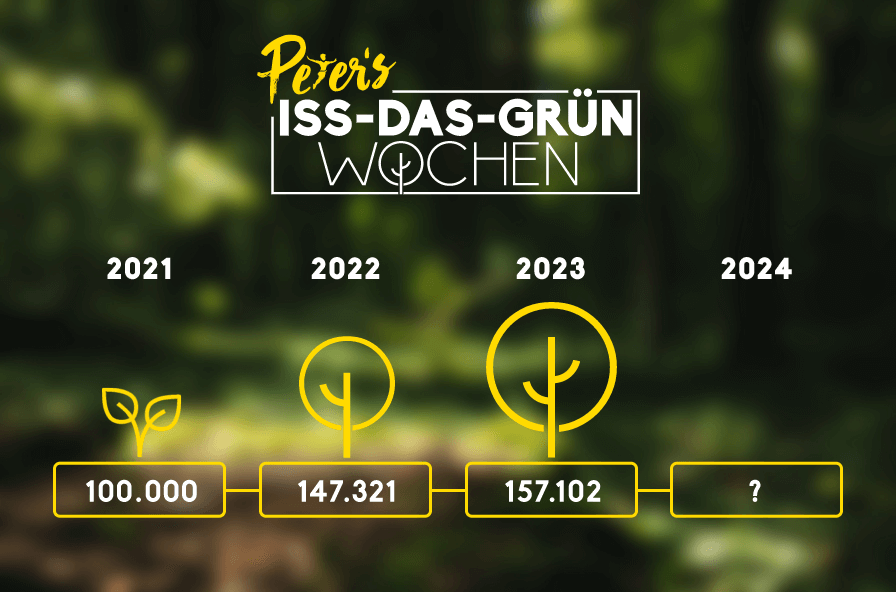
We planted 100,000 trees in 2021 and 147,321 in 2022. 157,102 young seedlings were planted in 2023. In total, we have been protecting and maintaining around 1,000 hectares of mixed forest as part of the GREEN UP WITH PETER initiative since 2012. Sounds like a lot, but it’s hard to visualize.
Since 2021, we have planted mixed forest over an area of 1,400 football fields.
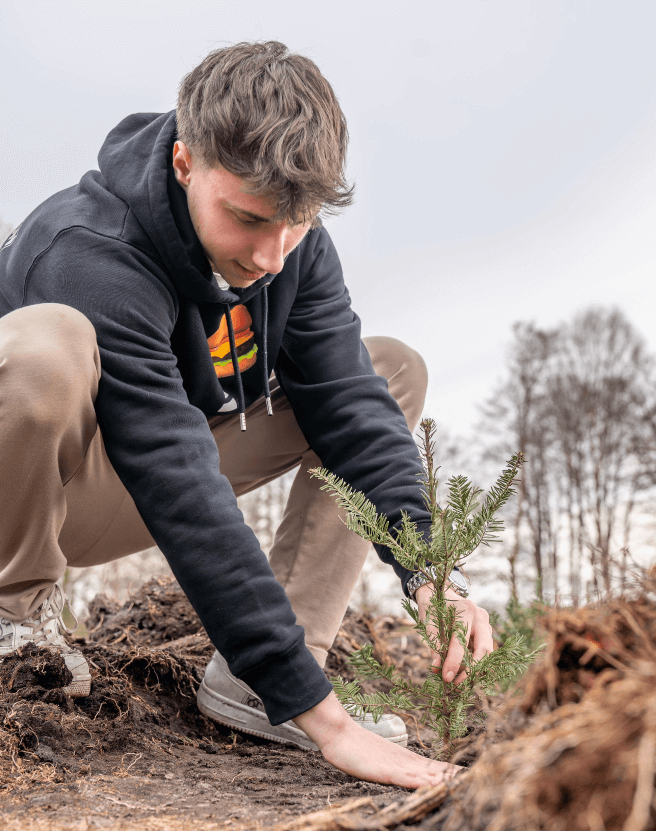
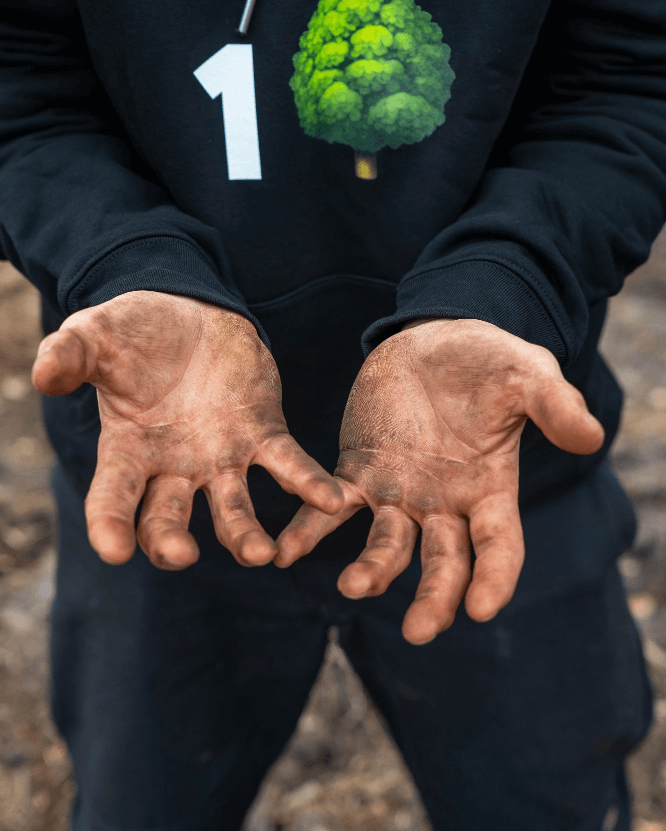
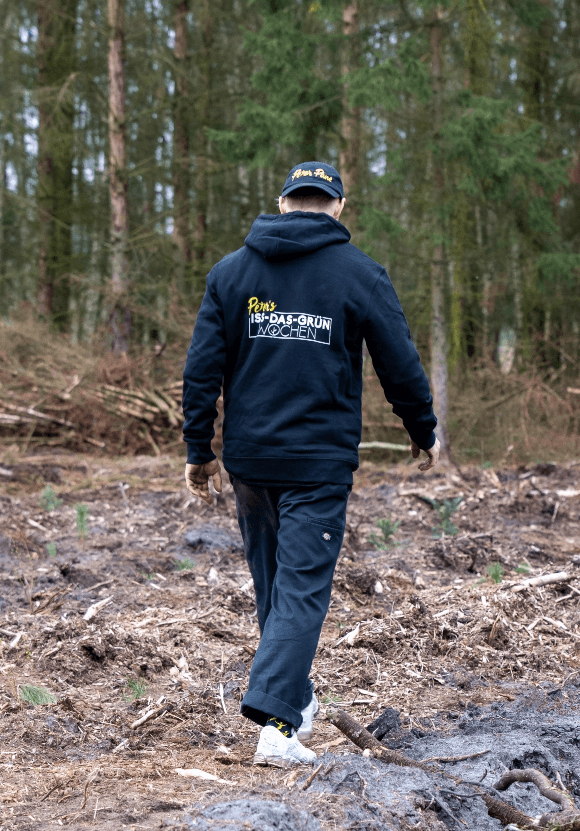
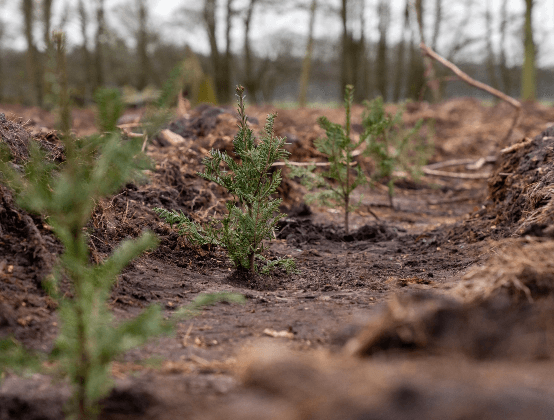
We don't just plant trees - we create habitats
Our areas in Mecklenburg-Vorpommern are home to countless plants and a variety of animal species, many of which are endangered. Pine, silver fir, Douglas fir, copper beech, English oak, bird cherry, birch, spruce and many other tree species grow here, which we are replanting. Otters, beavers, black storks and white-tailed eagles have settled in this habitat, as have deer, roe deer, foxes and hares. New species are added every year.
Our trees - nature's superheroes
We help to preserve nature in all its wonderful diversity. Our trees provide habitats for animals and plants, produce vital oxygen, reduce fine dust pollution and store the climate killer CO2. They also provide sustainable raw materials and protect the soil from erosion caused by wind or flooding.
Over their lifetime, our trees bind around 5,500 tonnes of CO2 – as much as 40 cars on a trip to the moon and back.
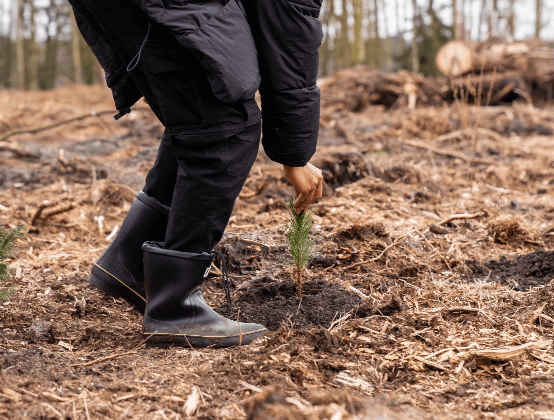
What you should know about our forests
Forests have been part of our landscape for thousands of years. They provide habitats for animals and plants, produce vital oxygen and store the climate killer CO2. They also supply sustainable raw materials and protect the soil from erosion by wind or floods. They not only keep the climate stable, but also contribute to a species-rich nature, while at the same time having a positive effect on our health and offering us rest and relaxation. Forests just make you happy.
The forest in Germany and its inhabitants are threatened by many things that also cause problems for us humans. Heat, drought and extreme weather conditions have made forests vulnerable to pests and wildfires in recent decades. Added to this are environmental toxins and waste. Because the forest not only offers a habitat for animals, but also recreation for people, we are committed to the preservation and planting of climate-stable, resilient forests. Support us!
Every day, with all our passion, we are committed to giving people a good time. That is why we also take responsibility for a future in which we all want to live. So we don’t just talk about sustainability, environmental protection and regionality – we live them! Since we were founded, we have been reforesting forests in Mecklenburg-Western Pomerania and Schleswig-Holstein. This is how we create habitats, fill in areas lost to climate and pests and actively work towards a greener world that is good for us.
A sustainable forest is a mixed forest. It consists of various deciduous and coniferous trees. The different tree species complement and protect each other. This means that pests do not find it as easy to infest many trees at once as is the case in large monocultures. A mixed forest is more resilient and better able to withstand threats. In mixed forests, the crown and root systems complement each other. This is of great advantage for the water and nutrient supply of the forest. Thus, a mixed forest is also less susceptible to drought and thus to forest fires. Mixed forests are also a diverse habitat for animals and plants, because a greater diversity of species finds food and shelter in them.
The areas on which we plant new trees must first be prepared in order to provide the young trees with an ideal basis for growth. For this purpose, coarse wood residues and other plant parts are crushed – this is called mulching. This creates a humus mat that protects the soil from drying out.
Before planting, the areas are then plowed to expose the mineral soil, into which the young saplings are then planted with spades and augers. The soil prepared in this way also promotes natural regeneration – this is what self-seeding trees are called. In order to protect the new trees from the hungry mouths of deer and roe deer, we put up a fence around the area before we start planting. Then our little trees are planted at the Güstrow tree nursery in Mecklenburg-Western Pomerania and establish a new mixed forest on the area.
Mecklenburg-West Pomerania has always been characterized by its forest areas. In addition to a large number of plant and fungus species, the forests provide a home for countless animal species in particular. Protecting the habitat of these animal species is particularly important to us.
Therefore, many typical animal species that have the forest as their habitat can be found here. Royal red deer, the prettily spotted fallow deer and the delicate roe deer live in our forests. Wild boars feel at home, as do badgers, foxes and rabbits. Many endangered bird species also find a home here, such as the white-tailed eagle, the black stork or the rare dipper. With our GREEN UO WITH PETER initiative, we ensure that their habitat not only grows every day, but is also protected for a long time.
For a healthy balance, we therefore plant mixed forests consisting of many different tree species. We will continue to do so in the future in order to leave our children a stable climate and a nature rich in species.
Today around 1,000 breeding pairs live in Germany again. The kings of the air are breeding successfully again in our forests and can be observed regularly.
Many bird, mammal and plant species and up to 1,800 different insects live in our forests. Every year we have experts check how successful our measures are and adapt them so that they have maximum benefit.
Extreme weather conditions make things difficult for the trees. It is therefore important to plant a balanced mix of trees that support each other and make the forest more resilient. With our GREEN UP WITH PETER initiative, we are helping to replace damaged areas with new plantings.
